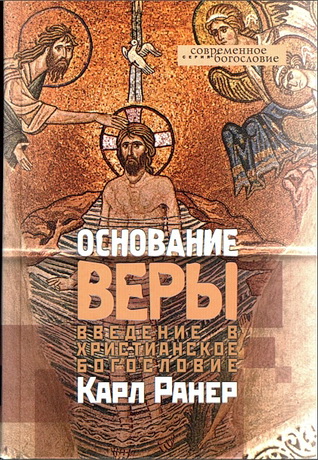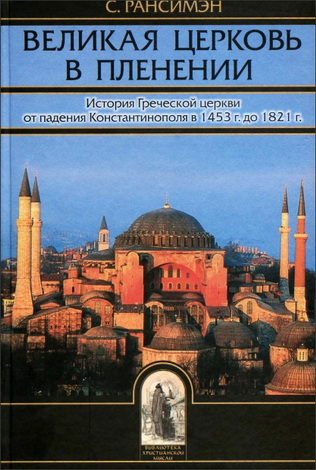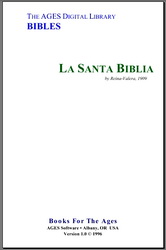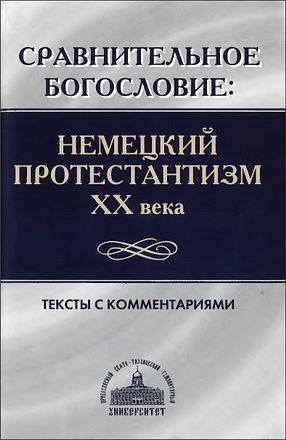
Berlin - Brettler – The Jewish Study Bible
More than twenty-five centuries have passed since an anonymous Jewish poet wrote an elaborate and lengthy prayer that included this exclamation: О how I love your teaching! It is my study all day long (Ps. 119.97). These two themes—the love for Torah (teaching) and dedication to the study of it—have characterized Jewish reading and interpretation of the Bible ever since.
The love is the impetus for the study; the study is the expression of the love. Indeed the intensity with which Jews have examined this text through the centuries testifies both to their love of it—a love combined with awe and deep reverence—and to their intellectual curiosity about it. That tradition of impassioned intellectual engagement continues to the present day. The tradition of biblical interpretation has been a constant conversation, at times an argument, among its participants; at no period has the text been interpreted in a monolithic fashion.
If anything marks Jewish biblical interpretation it is the diversity of approaches employed and the multiplicity of meanings produced. This is expressed in the famous rabbinic saying: "There are seventy faces to the Torah" (Num. Rab. 13.15 and parallels), meaning that biblical texts are open to seventy different interpretations, with seventy symbolizing a large and complete number.
Thus, there is no official Jewish interpretation of the Bible. in keeping with this attitude, the interpreters who contributed to this volume have followed a variety of methods of interpretation, and the editors have not attempted to harmonize the contributions, so an array of perspectives is manifest. in addition, we do not claim any privileged status for this volume; we can only hope that it will find its place among the myriad Jewish interpretations that have preceded and will follow.
We hope that Jewish readers will use this book as a resource to better understand the multiple interpretive streams that have informed, and continue to inform, their tradition. We also hope that The Jewish Study Bible will serve as a compelling introduction for students of the Bible from other backgrounds and traditions, who are curious about contemporary academic Jewish biblical interpretation. Jews have been engaged in reading and interpreting the Bible, or Tanakh, since its inception. Even before the biblical canon was complete, some of its early writings were becoming authoritative, and were cited, alluded to, and reworked in later writings, which themselves would become part of the Bible.
Adele Berlin and Marc Zvi Brettler – The Jewish Study Bible
Oxford University Press – 2004 y. / 2226 p.
ISBN 978-0-19-529754-6
Adele Berlin and Marc Zvi Brettler – The Jewish Study Bible – Contents
- Maps and Diagrams
- Introduction: What Is The Jewish Study Bible? Adele Berlin and Marc Zvi Brettler
- Preface to the 1985 JPS Edition
- Alphabetical Listing of the Books of the Bible
- Hebrew Transliteration
- Guide to Abbreviations and Terms
- Abbreviations Used for the Books of the Bible
- Abbreviations and Terms Used in the Footnotes to the Translation
- Abbreviations Used in the Annotations, Introductions, and Essays
TORAH Introduction by Marc Zvi Brettler
- Genesis Introduction and Annotations by Jon D. Levenson
- Exodus Introduction and Annotations by Jeffrey H. Tigay
- Leviticus Introduction and Annotations by Baruch J. Schwartz
- Numbers Introduction and Annotations by Nili S. Fox
- Deuteronomy Introduction and Annotations by Bernard M. Levinson
NEVI’IM Introduction by Marc Zvi Brettler
- Joshua Introduction and Annotations by Carol Meyers
- Judges Introduction and Annotations by Yairah Amit
- First Samuel Introduction and Annotations by Shimon Bar-Efrat
- Second Samuel Introduction and Annotations by Shimon Bar-Efrat
- First Kings Introduction and Annotations by Ziony Zevit 668 Second Kings Introduction and Annotations by Ziony Zevit
- Isaiah Introduction and Annotations by Benjamin D. Sommer
- Jeremiah Introduction and Annotations by Marvin A. Sweeney
- Ezekiel Introduction and Annotations by Marvin A. Sweeney
- The Twelve Minor Prophets Introductions and Annotations by Ehud Ben Zvi
- Hosea
- Joel
- Amos
- Obadiah
- Jonah
- Micah
- Nahum
- Habakkuk
- Zephaniah
- Haggai
- Zechariah
- Malachi
KETHUVIM Introduction by Marc Zvi Brettler
- Psalms Introduction and Annotations by Adele Berlin and Marc Zvi Brettler Proverbs Introduction and Annotations by Michael V. Fox
- Job Introduction and Annotations by Mayer Gruber
- The Scrolls Introduction by Marc Zvi Brettler
- The Song of Songs Introduction and Annotations by Elsie Stern
- Ruth Introduction and Annotations by Adele Reinhartz
- Lamentations Introduction and Annotations by Daniel Grossberg
- Ecclesiastes Introduction and Annotations by Peter Machinist
- Esther Introduction and Annotations by Adele Berlin
- Daniel Introduction and Annotations by Lawrence M. Wills
- Ezra Introduction and Annotations by Hindy Najman
- Nehemiah Introduction and Annotations by Hindy Najman
- First Chronicles Introduction and Annotations by David Rothstein
- Second Chronicles Introduction and Annotations by David Rothstein
ESSAYS Introduction by Adele Berlin and Marc Zvi Brettler
- Jewish Interpretation of the Bible
- Inner-biblical Interpretation Benjamin D. Sommer
- Early Nonrabbinic Interpretation Hindy Najman
- Classical Rabbinic Interpretation Yaakov Elman
- Midrash and Jewish Interpretation David Stern
- Medieval Jewish Interpretation Barry D. Walfish
- Post-medieval Jewish Interpretation Edward Breuer
- Modern Jewish Interpretation S. David Sperling
- The Bible in Jewish Life and Thought
- The Bible in the Dead Sea Scrolls Esther Eshel
- The Bible in the Synagogue Avigdor Shinan
- The Bible in the Liturgy Stefan C. Reif
- The Bible in the Jewish Philosophical Tradition Hava Tirosh-Samuelson
- The Bible in the Jewish Mystical Tradition Background by the editors
- The Glorious Name and the Incarnate Torah by Elliot R. Wolfson
- The Bible in Israeli Life Uriel Simon
- Jewish Women's Scholarly Writings on the Bible Adele Reinhartz
- Jewish Translations of the Bible Leonard j. Greenspoon
- Backgrounds for Reading the Bible
- The Religion of the Bible Stephen A. Geller
- Concepts of Purity in the Bible Jonathan Klawans
- Historical and Geographical Background to the Bible Adapted by Adele Berlin and Marc Zvi Brettler
- Languages of the Bible Steven E. Fassberg
- Textual Criticism of the Bible Adele Berlin and Marc Zvi Brettler
- The Canonization of the Bible Marc Zvi Brettler
- The Development of the Masoretic Bible Jordan S. Penkower
- The Modern Study of the Bible Adapted by Adele Berlin and Marc Zvi Brettler
- Reading Biblical Poetry Adele Berlin
Tables and Charts
Weights and Measures
Timeline
Chronological Table of Rulers
Calendar
Table of Biblical Readings
Chapter and Verse Differences
Translations of Primary Sources
Glossary
Index
Adele Berlin and Marc Zvi Brettler – The Jewish Study Bible – Torah
Terminology, Contents, and Traditional Views of Authorship the term torah, "teachings, instruction," derives from the root y-r-h, "to shoot (an arrow)," and thus etymologically refers to that which ”hits the mark.” Jewish tradition, from the late biblical period on, uses "Torah" to refer to the first section of the Bible, the books Genesis, Exodus, Leviticus, Numbers, and Deuteronomy. These books are also called ״he Five Books of Moses" or the "Pentateuch," which derives (via Latin) from the Greek penta (five) teuchoi (books). As early as the 1st century ce, these five books were written on one long scroll, signaling that they are one unit.
Unlike other canonical divisions, where there is significant debate within and between different religious traditions (see the essay on "Canonization," pp. 2072-77), both Jewish and Christian traditions view the books Genesis through Deuteronomy in this order as a single unit, standing first in the Bible. The unanimity of tradition and the initial placement of these five books reflect their significant place within religious life. In Judaism, the Torah is accorded the highest level of sanctity, above that of the other books of the Bible. Despite their traditional perception as a unity, it is not so obvious how these five books cohere.
They certainly do not form a single book in the modern sense, with a single author; modern scholarship has persuasively argued that each of these books is composite, reflecting many traditions and sources (see below). While the plot progresses chronologically, from the creation of the world to the end of the wandering in the wilderness, a large part of this story is retold in Deuteronomy. Moreover, the story does not end here, but continues into the book of Joshua and beyond. While Moses is the central human character in much of the Torah, he is introduced only in ch 2 of Exodus, and is absent from all of Genesis.
There are several major themes, including the early development of Israel as a people, the covenant between God and Israel, and the promise of the land; but none of these is present throughout the Torah and all continue beyond it. Theme alone does not define what the Torah is. In fact, if this final theme of promise of the land and its fulfillment is determinative, we should speak of the Hexateuch, the six books of Genesis through Joshua, rather than the Pentateuch or Torah. The Hebrew terms torah and tarat moshe ("the Torah of Moses"), already in use in late biblical literature to describe what is later called the Torah, offer a better cl and unity of these books.
Torah is often understood as "law," and indeed this is one of its frequent meanings in the Bible, as in Exod. 12.49: "There shall be one law [Heb torah] for the citizen and for the stranger who dwells among you." Law is a predominant genre of the Torah, which contains not only the Decalogue in Exod. ch 20 and Deut. ch 5, but extensive legal collections in Exod. chs 21-23, Lev. chs 17-26, and Deut. chs 12-26, as well as selected laws within various narratives, such as the law of circumcision in the narrative about Abraham in Gen. ch 17 and the law concerning inheritance of the land by women in Num. ch 36, embedded within a section about the possession of the land.
Many narrative sections also contain material that is of legal significance. For example, the first creation story in Genesis culminates with the "creation" of the Sabbath (Gen. 2.2-3), though this would only be legislated in Exod. ch 16, and then as part of the Decalogue, in Exod. 20.8-11. Similarly, the story of the construction of the Tabernacle (Exod. chs 25-40), a temporary temple for God in the wilderness, is not narrated for its own sake, but as an introduction to the various laws of sacrifice, narrated at the beginning of Leviticus, the book that immediately follows these chapters.





Комментарии
Пока нет комментариев. Будьте первым!